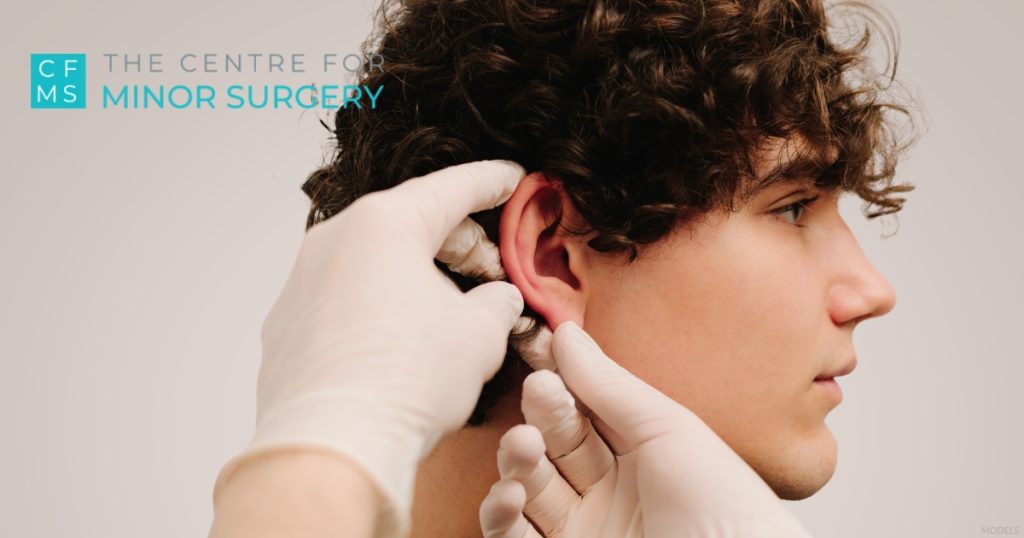If you’re considering split earlobe repair, what should you expect? At our practice, we use the most advanced techniques to deliver lasting, natural-looking results with a smooth recovery. In this post, we’ll walk you through what happens during the surgery and follow-up care, with details on why simply stitching the skin back together is insufficient.
1. Start With a Local Anaesthetic
The procedure begins with a local anaesthetic injection to numb the earlobe area. Because earlobes have relatively few nerve endings, most patients report only mild pressure rather than pain. Once the area is fully numb, the surgeon can work precisely and without causing discomfort.
2. Surgical Excision of Damaged Tissue
A key principle of the procedure is you can’t just sew a ripped or torn earlobe back together and expect a reliable long-term repair. Our surgeons remove (excise) the frayed or scarred edges of the split or elongated piercing to create clean, fresh margins. Those ragged edges won’t heal properly if simply stitched because they tend to result in uneven closure, thickened scars, or reopening under stress.
3. Precise Realignment of Tissue Layers
After trimming, your surgeon will reposition and align the deeper tissue structures. This step restores the earlobe’s internal support and shape, ensuring that the healed lobe feels natural and strong rather than thin or puckered. Layered repair also helps reduce tension on the surface, which promotes smoother, flatter scars.
4. Fine Suturing
Once the deeper layers are reinforced, the surgeon closes the skin with extremely fine sutures. Because the edges are fresh and neatly matched, the risk of puckering, misalignment, or visible scarring is minimized. The surgeon carefully places the sutures to maintain even tension across the repair, helping the earlobe heal symmetrically.
5. Delayed Re-piercing
The Centre’s surgeons do not attempt to preserve the original piercing hole during repair. Trying to keep the old hole open often compromises the shape and strength of the lobe. Instead, once the earlobe has fully healed—typically within 6 to 8 weeks—a new piercing can be safely placed close to the original site.
6. Immediate Post-op Care
During the first few days after the surgery:
- Expect mild bruising, swelling, or numbness for the first week.
- Keep your head elevated while sleeping and avoid putting pressure on the ear.
- Follow your wound-care instructions carefully; gentle cleaning and dressing changes support a smooth recovery.
- Most patients need only over-the-counter pain relief, if any.
You can find more information about what to expect after minor surgery on our FAQ page.
7. Suture Removal
If non-absorbable sutures are used, they’re typically removed about 10 to 14 days after surgery. By this point, most of the surface healing is complete, though some pinkness or tightness may persist for several weeks as the tissues strengthen.
8. Final Recovery
By the one-month mark, most patients can resume all normal activities. Over the next few weeks, the scar continues to flatten and fade, and the earlobe regains full softness and flexibility. Once healing is complete, the repaired area looks natural, with minimal visible evidence of surgery. You can get more information about how long it takes for earlobe repair to heal in our earlier blog post.
Ready To Take the Next Step?
Still have more questions about earlobe repair surgery? You can request a consultation or call us at (416) 663-9649 to discuss your earlobe concerns. Our Our Royal College–certified plastic surgeons will guide you through every step, from initial consultation to postsurgical care.


Leave a Reply